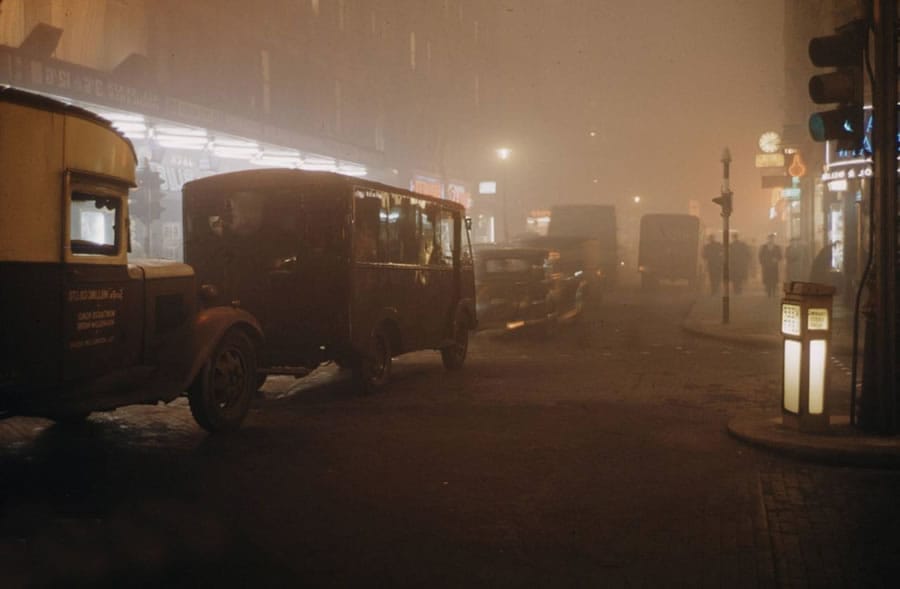
The Great Smog of 1952 Essay
Smog is a problem of humankind since medieval times. Thus, it is necessary to talk about the Great Smog of 1952 (also known as The Big Smoke) that occurred in England; observing it from different positions and dwelling on its specific details.
First of all we are going to define the concept of smog, because it will help us to understand its nature and its harmful impact on human health. According to official literature smog is an aerosol from a smoke and other emissions from industrial plants and transport, mixed with dust and mist (Berridge, 2005). It is most commonly observed in all large cities and in places where industrial enterprises are located (which in principle are located not far from the urban infrastructure everywhere). Thus, talking about the Great Smog of 1952 in England, it is necessary to mention that the problem of the smoke pollution had already existed since the Middle Ages in London. For instance, in 1273 King Edward I issued a decree which banned the use of coal in the city due to heavy smoke produced by its burning in big amounts. So, basing on historical facts, we see that smog has become an integral part of London in the late 19th century and became known as ‘pea-souper’ (due to its color and structure – thick and yellow).
In December 1952 London plunged into the smog, which was later named the Great Smog. Describing this smog Davis, Bell and Fletcher wrote that “In early December of 1952, a cold fog descended upon London. Because of the cold, Londoners began to burn more coal than usual. At the same time, the final conversion of London’s electric trams to diesel buses was completed. The resulting air pollution was trapped by the heavy layer of cold air, and the concentration of pollutants built up dramatically” (Davis, Bell and Fletcher, 2002). Thus, the Great Smog ruled over the city just 4 days – from 5th to 9th December 1952, but the consequences of this environmental catastrophe were terrible.
It is a well-known fact that fog and smog were a part of everyday life in London; they could happen rather often, so the smog of 1952 looked like a kind of ordinary fog and people thought that there were no reasons to worry. But it was only the beginning because little bit later minimum visibility (sometimes ‘no more than several meters’, or even ‘at arm’s length’) stopped the life of the whole city for several days. All meetings and concert were canceled; public transport was stopped, too. Smog became a protection for criminals in those days and even ambulance could not quickly come to sick people; the doctors went near their cars to get at least to someone and help people. The doctors had no choice and they had to go to their patients, because according to statistical data at that time, the number of deaths (especially among infants, the elderly and people with respiratory diseases) has increased dramatically and reached 4,000 ‘preterm’ deaths. But in reality, authorities believe that the effects of the Great Smog were even more horrifying (about 12,000 deaths and 100,000 illnesses in that period). Some researchers stated that over 4,000 people died from the Great Smog in 1952; another 8,000 people died in the next few months, while the British government refused to accept the fact that these deaths were the consequence of smog from heavy burning of coal, attributing them to the flu epidemic at first (Brimblecombe, 1987).
Currently, the Great Smog became a strong part of the past due to an active policy of environmental protection in London; moreover, people even consider that a disaster in London in 1952 had served as the assumed starting point of the modern environmental movement.
Discussing in details main harmful impacts of smog on human health it is necessary to emphasize that smog is the enemy of humankind; the enemy that spoil people’s health and destroy surrounding nature. Nowadays it is almost impossible to find the city that would not pollute the atmosphere with emissions. Smog is so dangerous, because it can be formed virtually by any weather and climatic conditions. It is virtually impossible to fight against smog. Nowadays, for example, the only salvation is the transition from polluting industries to more environmentally friendly transport because the problem of smog takes its beginning since the Middle Ages and the Great Smog of 1952 is a good illustration of its destroying power.
In addition it is necessary to say that smog is especially dangerous for children, the elderly, and people with diseases of the cardiovascular system. Smog is almost unbearable and unfit for life in the city for people with lung diseases, patients with bronchitis, asthma and emphysema. Smog is particularly dangerous when the weather conditions allow the thick shroud to be in one place, not clearing away.
Thus, taking everything into consideration it is possible to conclude that the Great Smog of 1952 was a big human catastrophe that killed thousands of innocent people. Unfortunately, this catastrophe one more time proves that even nowadays smog is a big problem in many cities across the globe and people should not only think about possible profits making their business, but also to take care of own health, protecting themselves from harmful environmental impact which is caused by their hands.

